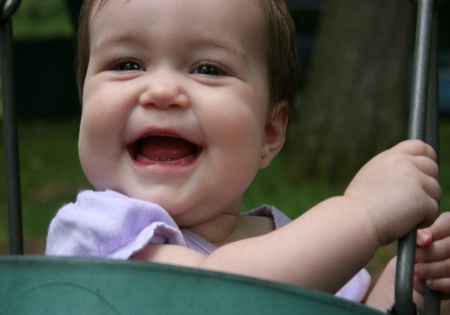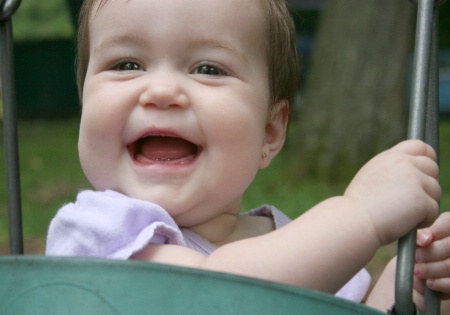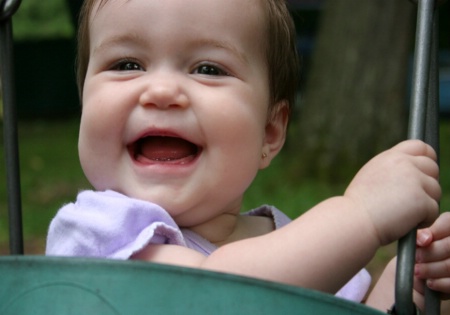
Kelly Barclay |
|
Why are images so dark with the canon 20d?
I'm curious if anyone else is getting dark exposures from the 20D? I have to lighten almost every picture in editing. Even on a sunny day they seem dark. I have my exposure compensation on too. Any ideas?
July 18, 2005
|
|
|
Jon Close |
|
What exposure mode(s) are you shooting? Indoors/outdoors? With/without flash?
>>"I have my exposure compensation on too."<< ?? How have you set exposure compensation?
July 18, 2005
|
|
|
Kelly Barclay |
|
I use the P setting alot when I'm not sure what the proper settings should be. I have the exposure comp on +2/3 right now and still some of the pictures I took over the weekend outdoors seemed too dark. It was cloudy but should have been light enough. When I go into Microsoft imaging and do exposure auto fix it almost always lightens it up. Plus the sharpness isn't there that I would expect from an 8 mp camera. Alot of pictures on this website look sharper and are taken with alot less of a camera. Do you have a 20D? Thanks for your help!
July 18, 2005
|
|
|
Kelly Barclay |
|
|
|
|
|

Orginal
Speed setting- 1/250 5.6
Kelly Barclay
|
|
|
|

After
After exposure autofix in Microsoft Imaging. Notice lighter but not sharp.
Kelly Barclay
|
|
|
|
Here is an example of a picture I took about 1pm yesterday. It was cloudy. I put it on speed setting since she was swinging. The settings were 1/250 and 5.6 and you can see how dark it is yet the detail is good. When I lighten it so it's not so harse I lose the detail and sharpness. Any suggestions?
July 18, 2005
|
|
|
Karma Wilson |
|
I have the 20D. The sharpness could certainly be an issue with whatever lens you are using. I notice a remarkable difference between my lenses and some lenses perform better at certain apertures. Sharpness issues are not a problem with my 20D. I put on my good lenses and get very sharp crisp pictures. A lot of P&S cameras sharpen in camera a lot--some of my pictures out of my Fuji point and shoot seemed very sharp--but they really don't compare in detail and control to my 20D shots. As to the dark pictures are you quite certain you are metering properly? Usually when I have this problem I've not paid enough attention to where I've metered the shot to. If you know a lot about metering perhaps it is a camera issue and you should have the camera serviced. If you don't know about metering get the book Understanding Exposure. It will help a lot (if you remember to meter the shot--my biggest challenge so far). Also, many times the auto fix will actually lighten my shots. In fact I rarely pay much attention to auto fix. It often makes assumptions about my picture that I'm not prepared to make! (For instance it will try to soften a blown out highlight I knew would be there and purposefully left there). Karma
July 18, 2005
|
|
|
Kelly Barclay |
|
Thanks for the help! What lens do you get the best results from? I have the 15-55 that came with the camera. Also a 90-300mm Canon and a 35-80mm off a Canon Rebel that's a few years old. I do notice the latter lens isn't as good at focusing as the other two. I don't know alot about metering. You get the reading from the area you want and then lock the settings and shoot the picture? For instance I know the speed setting doesn't let much light in but that is a typical look to alot of the pictures I take. Even when using the P setting. I leave it on AWB too. I would like the pictures to be sharper and lighter. Is it all about metering the correct area? What about when you are shooting photos of kids that are constantly moving? Thanks for your help. I think I do need a book! I just want to get the best photos I can from this camera! Kelly
July 18, 2005
|
|
|
Jon Close |
|
The original does not look too dark to me, at least not that the meter failed. Exposure on the arm, shoulder and "high points" of the face look just right. It's just that much of the face and eyes are in shadow and needed to lightened with a reflector or fill flash. Re sharpness and a dull overall look ==> In addition to possible limitations of an economy lens at wide-open aperture ... the images are like that due to the anti-alias/low-pass filter over the digital sensor. This filter prevents digital artifacts like moire and stair-stepped diagonals, but softens and dulls the image, necessitating post-processing. P&S cameras do a lot of this in-camera sharpening, contrast, and saturation adjustment. DSLRs like the 20D do much less, leaving it to the user to do better, more precise post-processing on a computer with far more processing power than the camera has. You can boost the 20Ds parameters to do more of this in-camera, but the results will not be as good as doing the post-processing yourself.
July 18, 2005
|
|
|
Kelly Barclay |
|
Thanks again for your help! What is the best way to edit them so they are sharper? Use the unsharp mask? I click sharpen a portrait and it doesn't seem to do anything. I also have Photo Shop 2 does it work better than Microsoft Imaging? I have the parameters on setting one which is supposed to be sharp, but as you can see they aren't. Check out the other pictures in my gallery and see if you can tell me anything you see is a problem or that could be contributing to my problem. Although most of them have been lightened. I really appreciate your help!! Thanks!
July 18, 2005
|
|
|
Karma Wilson |
|
Ahhh...Didn't see the photos when I first posted. Now I can see them (my computer doesn't always load photos--if they take too long it just exes them out). I agree with Jon about metering. Looks fine. Lighting looks a little flat is all. About lenses--I have different lenses for different situations. My favorites for over all quality are my better quality lenses. My Sigma Ex 2.8 70-200 and my Sigma EX 2.8 105mm Macro lens. But I still use my cheapie Tamron 28-300mm because it's portable and versatile and does a decent job for the money. About sharpening...here is my very favorite way to sharpen. I make a duplicate layer of the photo, go to filter/other/high pass. I put on the high pass filter usually at about 3.5-5. Then I chose "overlay" mode for the duplicate layer. This way if the sharpening creates noise in areas of the picture like the background I can just use my eraser tool and erase away those area and leave my subject sharp. When everything is done I merge visible layers. This usually takes less than a minute total.
Karma
July 18, 2005
|
|
|
Kelly Barclay |
|
Thanks for getting back to me. I'll have to check on some good lenses! I tried what you said in photo shop 2 that I have and it made the whole image gray. Don't know what I'm doing wrong. I did just adjust the contrast and brightness and it looks a little better. Anything else I could try? I have Microsoft Imaging Suite 10 too. What do you use for editing? Thanks so much for your help!
July 18, 2005
|
|
|
Kelly Barclay |
|
|
|
|
|

example 2
adjusted the contrast and brightness slightly.
Kelly Barclay
|
|
|
|
Thanks for getting back to me. I'll have to check on some good lenses! I tried what you said in photo shop 2 that I have and it made the whole image gray. Don't know what I'm doing wrong. I did just adjust the contrast and brightness and it looks a little better. Anything else I could try? I have Microsoft Imaging Suite 10 too. What do you use for editing? Thanks so much for your help!
July 18, 2005
|
|
|
Karma Wilson |
|
You forgot to chose "overlay" as your mode for the duplicate layer. It will turn gray--that's normal. Then choose "overlay" and it will go back to normal--only sharper. Karma
July 18, 2005
|
|
|
Kelly Barclay |
|
Thanks I'll try again. It said overlay but I may have done it wrong. I don't have a manual for this program as it came with my computer. It's hard to know what all you can do with it. Thanks for your help! Kelly
July 18, 2005
|
|
|
Karma Wilson |
|
Here is the version I did (I hope you don't mind--I put your name on the photo so there would be no mistake). I did the sharpening I told you about and I sharpened the highlights of her eyes and earring just a tad. I adjusted levels and did an adjustment layer of brightness contrast. I also did my favorite softening effect VERY slightly (duplicate layer, heavy guassian blur on top, adjust opacity until you like, erase through carefully to key details--eyes and mouth mostly). Karma
July 18, 2005
|
|
|
Karma Wilson |
|
Hopefully here it is:
July 18, 2005
|
|
|
Kelly Barclay |
|
That does look better! Thanks! I think I need to get a book on the photoshop version I have. Otherwise it will take me forever to just explore and try things. Thanks!
July 18, 2005
|
|
|
David A. Bliss |
|
I have the Canon 10D. I have noticed that with a uniformly dark scences, it tends to over expose. I usually compensate down by 1/2 stop and bracket. I realize this is opposite of what you where describing, but I wanted to point out that the in camera meter is not perfect. You can only trust it so much. If you shoot RAW, you can do some exposure adjustments in processing (much more control than with JPEG). Also, have you calibrated your monitor? You want to make sure you are seeing it accurately, and not actually over exposing the picture because your monitor is dark. As for your lens, it is soft. Look up some reviews for the kit lens. It is the bottom of the line for Canon glass. You can go mid range Canon, and get very good results (you don't need to go all the way to L series). One of the lenses I shoot a 28-105 USM II (the one with the metal mount) that is very sharp at middle f stops, and acceptably sharp at f16 and f22. Also, you will always want to hit your pictures with a little bit of unsharp mask. One of the evil side effects of converting light into pixels. Don't use much, or it will look pixelated, have color edges that are too sharp, and will give you halos. If your focus was off, the unsharp mask won't help ;-) It can only be used to sharpen the little bit of softness that comes with digital.
July 18, 2005
|
|
|
Kelly Barclay |
|
Hi David. Yeah we have a similar problem. If I shoot raw though I have to use the software that came with the camera and then convert to JPEG right? It seems time consuming for the volume of pictures I take but I could switch to Raw when it's an important picture.
I'm starting to get the feel that I need a better lens! Where is the best place to get them and by best I mean the cheapest?! Ha! Thanks for your help. What editing software do you use?
July 18, 2005
|
|
|
Karma Wilson |
|
Kelly, invest in PS Elements 3.0. It converts the photo when you open it. It's really easy to use. I love it. As for a good cheap lens, I do find my Tamron 28-300MM to be sharper than the the kit lens, that's for sure. You lose the wide, but you gain a lot of zoom. It's not a professional lens by any means, but it really is much nicer than the kit lens in my opinion. At some apertures it is very sharp. It's $300 and I recommend it for the simple reason that it's a great light "walkabout" lens that can take nice portraits, has some macro ability and zoom ability but won't break the bank. Quite a few of my photos were taken with that lens. But for a really good lens there is no way around it--they cost a LOT. I don't even have a "really good lens" yet! But I have some better lenses and I do love them. Karma
July 18, 2005
|
|
|
David A. Bliss |
|
I only shoot JPEG when it is pictures that I know I will never publish (like when I get recruited to shoot at the company picnic). It is time consuming, but worth it to me, because every picture I process is going in my portfolio (if it isn't good enough to process, it goes onto a DVD backup and stored). If you are shooting mostly pictures of your kids, and they are for you and your family and friends, by all means, shoot jpeg. You can switch to RAW if you are shooting holiday portraits, or the like. I use Photoshop CS to convert and process my pictures. I process them as RAW (CRW with the Canon), then save them as an uncompressed TIFF. JPEGs always compress, regardless of how large you save them. You will lose quality if you save a JPEG once (not much, if at the lowest compression setting), and more every time you save. If you batch convert your RAWs to JPEGs (or TIFFs), which you can do with your Canon software, the images will default to the camera settings (white balance, tint, contrast, etc...). The images will look like they would had you shot JPEG. But, you still have the original RAW files, so if there is one picture that you really want to process, you can go back and process it as RAW, and get the in depth control. As for lenses, I have exclusively purchased used. I don't think I have ever bought a brand new lens. I take that back, years ago I bought a Tamron new, but I don't use it at all, anymore. If you use Ebay, research the lens, decide what you are willing to pay (remember to include the shipping costs) and stop bidding if it gets too high. I have seen people pay more for a used lens than they would have paid for it new!!! I have always liked B&H Photo Video and Adoroma to purchase new gear.
July 18, 2005
|
|
|
Kelly Barclay |
|
Thanks Karma! I think to make my camera worth what I paid I need a good lens and got editing software that I know how to use! I appreciate all your help! I'll check for that lens! It would be nice not to have to switch lens continually anyways! Thanks!
July 18, 2005
|
|
|
Kelly Barclay |
|
David- that made alot of sense, Thanks! I haven't spent the time with the Canon software that I should have. I'll check on the lens. What Tamron do you have? Does saving them as Tiff fill up your computer fast? I guess I could save the good ones as TIFF and the everyday ones as JPEG from the RAW right? How much is that editing program and how hard is it to learn? Thanks! Kelly
July 18, 2005
|
|
|
|
Log in to respond or ask your own question.
|